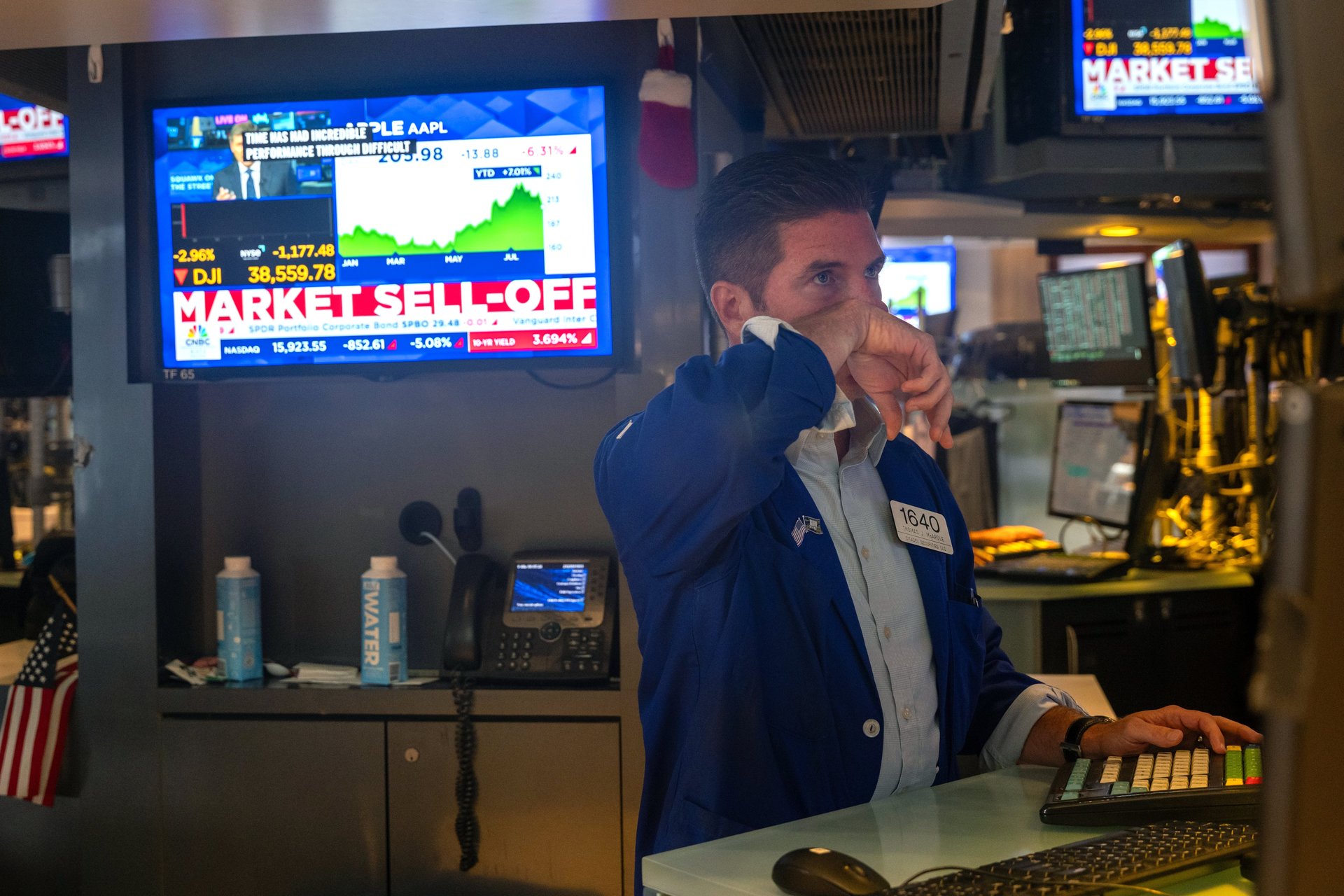The Dow, S&P 500, and Nasdaq rebound after global stock market chaos
The Nikkei 225 had its best day in almost 16 years after the sell-off

Major indices appear to be in correction after a global stock sell-off roiled the markets on Monday.
Suggested Reading
The S&P 500 rose 1.23% on Tuesday morning, after the index saw its worst day since 2022; Nasdaq 100 futures climbed 0.94%; and futures tied to the Dow Jones Industrial Average jumped 383 points, or about 1%.
Related Content
The Nikkei 225 also rebounded on Tuesday, surging 10.2% to have its best day in nearly 16 years. This is “typical after a market crash,” and signals that investors aren’t abandoning Japanese equities, Neil Newman, head of strategy at Tokyo’s Astris Advisory, told CNN.
Global stocks experienced a massive sell-off on Monday, with the Dow dropping over 1,000 points, the Nasdaq losing almost 600 points, and the S&P 500 ending the day $1.3 trillion lower. The bloodbath was brought on by renewed fears of a recession after Friday’s weaker-than-expected U.S. jobs report.
At the same time, the Bank of Japan decided to raise its benchmark interest rate, causing the value of the yen to rise and sparking fears of “carry trades” unwinding. This is a trading strategy that involves borrowing with a currency at a low interest rate, like the yen, and using it to buy higher-returning investments.
It’s not just stocks that are recovering. Bitcoin, which fell to a six-month low of $50,000 on Monday, popped up 2% on Tuesday to $55,000. Ethereum, the second-largest cryptocurrency by market capitalization, also climbed a little over 1% to nearly $2,500.
Monday’s market chaos illustrated just how quickly investors can retreat from riskier assets, including stocks and cryptocurrencies, when economic fears rise. Goldman Sachs’ Risk Appetite Indicator, which has already been on the decline since early June, fell even farther in intraday trading on Monday. The indicator collapsed to one of its lowest levels since the 1990s intraday, researchers at Goldman said, in large part due to the spike in the VIX, also known as the “fear index.”
There’s also a higher risk of a drop in the value of investments and funds within the next three months, as markets are expected to maintain high volumes with a decreased risk appetite among investors, Goldman said.
